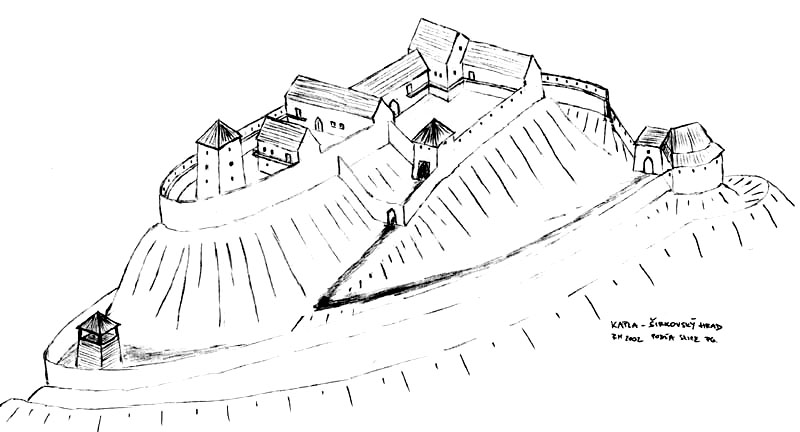History
In the light of archeological research, the castle was built in the 13th century. In the fourteenth century, king Charles I of Hungary gave it to a knight Roland, founder of the Lórántffy family. In the middle of the fifteenth century, the castle was occupied by the post-Hussite armed movement called bratrzyks. Only after the suppression of the unrest and the recapture of Kapla by king Matthias Corvinus in 1460, the castle was returned to the previous owners. The castle probably functioned briefly, but at the end of the 15th century it was finally abandoned.
Architecture
The upper core of the castle, measuring about 55 x 20 meters, consisted of a two-bay residential building on the eastern side and a second building located on the opposite western part of the walled courtyard. The eastern building can also be reconstructed as a smaller one-bay building with a small tower next to it. A rainwater tank about two meters wide was also placed nearby. The upper castle occupied the highest part of the hill and maybe from the west it was secured by an external wall. Behind it, a slightly lower fortified outer ward (20 x 30 meters) was created with further buildings on the south-west side, probably of economic functions, and a gate in the north-east side. At the foot of the hill there was probably an external belt of fortifications, both stone and wood-earth.
Current state
The castle has not survived to modern times. It takes about 25 minutes to get from the village to the area where it was located. Currently, the site is overgrown with trees and shrubs.
bibliography:
Bóna M., Plaček M., Encyklopedie slovenských hradů, Praha 2007.
Wasielewski A., Zamki i zamczyska Słowacji, Białystok 2008.


